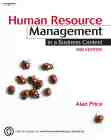Resourcing strategies and organizations
 Resourcing strategies. Resourcing strategies.
Most large organizations employ human resource or personnel specialists
to conduct or, at least, coordinate employee resourcing. This is a role that has long
been regarded as part of the domain of personnel management and personnel textbooks
conventionally describe resourcing as a passive, technical procedure - a matching of
available candidates to the requirements of the organization. In fact, successful
recruitment must be proactive. Organizations can take one
of three actions to fulfil their employee resourcing:
1. Reallocate tasks between
employees, so that existing staff take on more or different work. (...) The emphasis is on flexible working practices, requiring multi-skilled workers and sophisticated assessment
and development programmes.
2. Reallocate people within
the company. Traditionally, German and Japanese organizations have filled their supervisory and management posts from existing staff (...)
3. Recruit new staff from the external job market. Countries in the free-market tradition have focused most of their resourcing activities on
bringing in people from outside the organization.
These are explained further
on pages 348-350 (192-193 in the first edition) of Human Resource Management in a Business Context
 Types
of resourcing strategy. Resourcing is a dynamic process: the movement of human resources
through an organization. In terms of systems theory this can be represented as: Types
of resourcing strategy. Resourcing is a dynamic process: the movement of human resources
through an organization. In terms of systems theory this can be represented as:
* input
* throughput
* output
Businesses can assign people largely from existing staff or from the
external job market. Companies that focus on internal supply are likely to view
people as assets, carrying long-term value, rather than costs. This is in line with
practice in social market and Japanese organizations. It also reflects the spirit of the
Harvard model discussed in chapter 2. In essence the choice is between 'growing' or 'buying'.
Needless to say, firms in free markets such as the UK and the USA have a tendency
to 'buy' - and dispose of - employees as required.
This is elaborated and
related to different types of organizational strategy on pages 349-350 (pages 193-194 in the first
edition) of Human
Resource Management in a Business Context.


|




